콜로퀴움
21
2006-06
2006-06-21 16:00 ~ 17:00
- Speaker : Dr. Lee, Sang Hyun (이상현 박사 Gimhae Astronomical Observatory)
A wide and deep CCD photometry has been performed for three old open clusters, NGC 2420, NGC 1245, NGC 2506, using V and I filters. Our photometry covers 30\/x 30\/, 80\/x80\/, and 40\/x80\/ for NGC 2420, NGC 1245, and NGC 2506, respectively, and reaches to Mv≈10 for NGC 2420 and Mv≈9.5 for NGC 1245, NGC 2506, using BOAO SITe 2K CCD (NGC 2420) and CFH12K CCD (NGC 1245 and NGC 2506). Using isochrone fittings to the observed color-magnitude diagrams, we determined physical parameters (distance, age, metallicity and interstellar reddening) of the three clusters. We found clear evidences of mass segregation in the three clusters from the radial variation of LF and MF. We derived a lower limit of cluster mass using M-L relation of the main sequence stars: 1,068M⊙ (NGC 2420), 2,212M⊙ (NGC 1245), and 3,487M⊙ (NGC 2506). The half mass radii and the tidal radii derived from the cluster mass are 2.7pc. 6.1pc, 5.4pc, and 14pc, 18pc, and 21pc. respectively for NGC 2420, NGC 1245, and NGC 2506. The surface number density profiles and surface number density contour map strongly indicate the presence of tidal tails inside the tidal radius as well as the halo components. The contour maps of the surface number density clearly show that all the three clusters are elongated toward the Galactic center with the smallest ellipticity in NGC 2420 and largest ellipticity in NGC 2506.
14
2006-06
2006-06-14 16:00 ~ 17:00
- Speaker : Prof. Lee, Jounghun (이정훈 교수, Seoul University)
We analyze the C4 catalog of galaxy clusters from the Sloan Digital Sky Survey (SDSS) to investigate the axis-ratio distribution of the projected two dimensional cluster profiles. We consider only those objects in the catalog whose virial mass is close to 10^{14}h^{-1}M_{sun}, with member galaxies within the scale radius 1000 kpc. The total number of such objects turns out to be 336. We also derive a theoretical distribution by incorporating the effect of projection onto the sky into the analytic formalism proposed recently by Lee, Jing, & Suto. The theoretical distribution of the cluster axis-ratios is shown to depend on the amplitude of the linear power spectrum (sigma_8) as well as the density parameter (Omega_{m}). Finally, fitting the observational data to the analytic distribution with Omega_{m} and sigma_{8} as two adjustable free parameters, we find the best-fitting value of sigma_{8}=(1.01 +/- 0.09)(Omega_{m}/0.6)^{(0.07 +/- 0.02) +0.1 Omega_{m}}$. It is a new sigma_{8}-Omega_{m} relation, different from the previous one derived from the local abundance of X-ray clusters. We expect that the axis-ratio distribution of galaxy clusters, if combined with the local abundance of clusters, may put simultaneous constraints on sigma_{8} and Omega_{m}.
08
2006-06
2006-06-08 16:00 ~ 17:00
- Speaker : Prof. Eve Ostriker (University of Maryland)
The atomic interstellar medium is observed to be highly turbulent, and to
contain structure over a wide range of scales in the form of cold fliamentary
clouds embedded within a warmer medium. Recent observations have suggested
that a significant portion of the warm medium may be out of thermal
equilibrium. I will discuss recent numerical models that have investigated the
dynamics and thermodynamics of the atomic gas, focusing on the role of the
magnetorotational instability. The MRI has been extensively studied in the
context of accretion disks, but this is the first detailed study of MRI in a
strongly inhomogenous medium. I will describe the properties MRI-driven
turbulence in atomic gas under a range of galactic conditions, and discuss
implications for understanding various aspects of galactic structure and
evolution.
24
2006-05
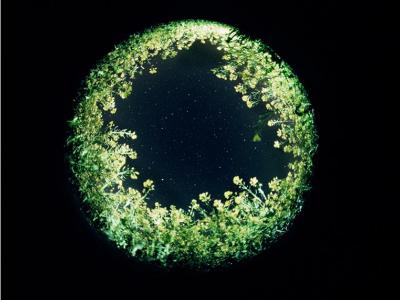
2006-05-24 16:00 ~ 17:00
- Speaker : Dr. Kim, Ki-Tae (김기태 박사, KASI)
Compared to low-mass star formation, very little is known about
the formation process of high-mass stars that are fundamental
in the evolution of galaxies. It is still much debated
whether high-mass stars form in a manner qualitatively similar to
low-mass stars, and there are two major competing models:
accretion via disks and coalescence of low-mass
(proto)stars. In this talk I will discuss some recent efforts
to differentiate between the two models by observing bipolar
outflows from massive protostars.
10
2006-05

2006-05-10 16:00 ~ 17:00
- Speaker : Dr. Moon, Yong-Jae (문용재 박사, KASI)
In this talk, we introduce recent Sun-Earth connection studies which have been done in solar and space weather research group at KASI. In a series of papers, we have examined the physical characteristics of geoeffective halo CMEs that produced geomagnetic storms. First, we investigated the probability of geoeffective CMEs depending on its solar surface location and speed using SOHO/LASCO CMEs from 1997 to 2003. Second, we examined the relationship between several CME physical parameters (e.g., earthward direction, density, mass, location) and geomagnetic storms for very fast halo CMEs (VCME > 1300 km/s). In particular, we suggested a new earthward direction parameter that is defined as a ratio, the shorter front from the solar center to the longer one. Third, we examined the relationship between the field orientation in a CME source region and a geomagnetic storm using a coronal flux rope model as well as its dependence on ICME classification (magnetic cloud or ejecta). Major results are as follows. 1) The most probable areas whose geoeffectiveness fraction is larger than the mean probability (0.4), are 0800 km/s). 2) The CME direction has much better correlations with the Dst index than other parameters for very fast halo CMEs. 3) The relationship between the field orientation and the geomagnetic storm for magnetic cloud is much better than that for ejecta, implying that the field orientation of the magnetic clouds is well conserved through the heliosphere. We also briefly introduce several ongoing studies: (1) earthward direction as an important geoeffective parameter, (2) solar wind effect on the propagation of IP shocks, and (3) satellite drag effect during strong solar/geomagnetic activities and the comparison between the drag derived density and the MSIS-90 model. Finally, we present some future plans in the Sun-Earth connection field.
03
2006-05
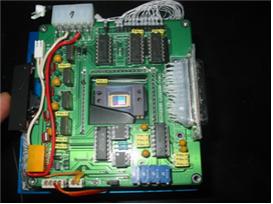
2006-05-03 16:00 ~ 17:00
- Speaker : Prof. Yoon, Suk-Jin (윤석진 교수,Yonsei Univ.)
The colors of globular clusters in most large elliptical galaxies are bimodal. This is generally taken as evidence for the presence of two cluster subpopulations that have different geneses. However, here we find that, because of the nonlinear nature of the metallicity-to-color transformation, a coeval group of old clusters with a unimodal metallicity spread can exhibit color bimodality. The models of cluster colors indicate that horizontal-branch stars are the main drivers behind the empirical nonlinearity.
We show that the scenario gives simple and cohesive explanations for all the key observations and could simplify theories of elliptical galaxy formation.
19
2006-04
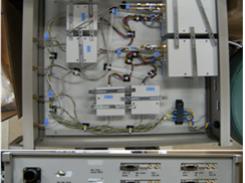
2006-04-19 16:00 ~ 17:00
- Speaker : 황치옥 교수(숭실대학교)
계산과학이 컴퓨터의 급속한 발전에 힘 입어 이론, 실험 혹은 관찰에 이어 과학 기술을 연구, 교육하는데 있어서 중요한 방법론으로 등장하게 되었다. 이러한 계산과학의 핵심을 이루고 있는 계산과학 기술에 대해 전반적으로 고찰합니다. 계산과학 기술은 크게 기존의 과학 기술의 패러다임인 (편)미분 혹은 적분 방정식의 연장선 상에서 이해할 수 있는 유한 차분법 혹은 유한 요소법과 컴퓨터의 출현과 더불어 가능해진 확률론적 방법인 (동력학적) 몬테 카알로와 직접 모사법으로 나눌 수 있을 것입니다. 이 각각의 계산과학 기술의 특징들을 전반적으로 고찰하고자 합니다.
07
2006-04
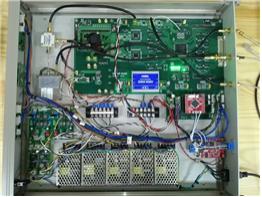
2006-04-07 16:00 ~ 17:00
- Speaker : Prof. Jai-chan Hwang (황재찬 Kyungpook National University)
Cosmology concerns the study of the universe at large, its history and its future.
Considering observational situations in cosmology, we are unable to obtain a model of the universe without some specifically cosmological assumptions which are completely unverifiable. Therefore, there exist limits. Cosmology itself, like all arts and sciences, is a construct of human intelligence, subject to social and linguistic conditioning and dubious means of communication. The question at issue is ultimately one for philosophic discussions.
28
2006-03
2006-03-28 16:00 ~ 17:00
- Speaker : Prof. Jocelyn Bell Burnell (University of Oxford )
22
2006-03
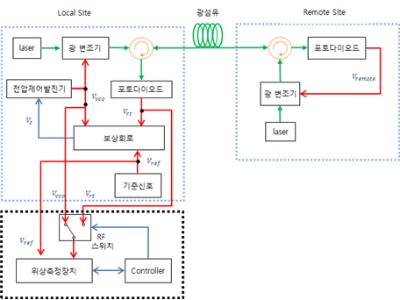
2006-03-22 16:00 ~ 17:00
- Speaker : Dr. Masaoki Hagino (KASI)
During this year, I have studied the feature of the active region filaments. Using two different observations which are H-alpha fibrils and EUV threads, we have determined filament chirality. We found clear hemispheric pattern. Namely, filaments in the northern (southern) hemisphere have dextral (sinistral) fibrils in H-alpha observations obtained from the Big Bear Solar Observatory. On the other hand, negative (positive) closings of filament threads in EUV images observed with TRACE appear in the northern (southern) hemisphere, respectively. These indicate that positive (negative) chirality filaments are surrounded by sinistral (dextral) fibrils. Since fibrils and EUV threads are along magnetic field lines, we suggest that filament and surrounding feature have a same helicity sign.
21
2006-03
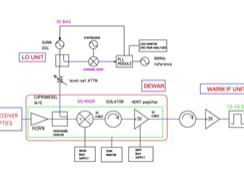
2006-03-21 14:00 ~ 15:00
- Speaker : Dr. Chih-Yueh Wang (Chung-Yuan Christian University)
We used two-dimensional hydrodynamical simulations and one-dimensional radiative transport radiation hydrodynamical simulations to investigate the properties of dense ejecta clumps (bullets) in Type Ia and core collapse supernova remnants, motivated by the observation of protrusions probably caused by clumps in Tycho…s remnant (SN 1572) and the Vela supernova remnant. The ejecta were assumed to freely expand into an ambient medium with a constant density. Ejecta clumps with an initial density contrast Co56 -> Fe56 in supernova ejecta during the first ~10 days is a possible mechanism to produce the clumping, which induces a forward shock that compresses the ejecta gas into a shell. When the flow tends toward a freely-expanding state, the thickness of the shell takes up ~ 100 in a narrow region limited by numerical resolution. The resultant interaction of the clumps with the remnant is expected at a stage as indicated by our simulations.
15
2006-03

2006-03-15 16:00 ~ 17:00
- Speaker : Dr. Il K. Moon (University of Arizona, Tucson AZ, USA)
Opto-mechanical analysis is an essential to develop a large telescope. In order to achieve the required performance specification of the telescope it should be optimized under static, thermal and dynamic loads by the high fidelity finite element analyses integrated with optical performance analyses. In addition, the active optics support system with lightweight mirror should be considered to correct a distorted image during the telescope operation which is designed and optimized by the extensive opto-mechanical analyses.
Detailed opto-mechanical analyses will be discussed in this seminar for the lightweight mirrors, active optics support system, overall telescope structure under various environments including gravity, thermal, wind and seismic loads. The overall performance of telescope will be addressed as well based on the Line of Sight (LOS) sensitivity equations.
09
2006-03
2006-03-09 16:00 ~ 17:00
- Speaker : Dr. Takashi Sakurai (NAOJ)
The heating mechanism of the solar corona is one of the fundamental problems in astrophysics. It is generally agreed that the heating is due to the magnetic fields in the solar atmosphere. The Solar-B satellite, the successor of Yohkoh (Solar-A), will be launched in 2006 September. The mission will focus on high resolution optical imaging with magnetography, coupled with X-ray imaging and XUV spectroscopy. Through coordinated observations of the solar atmosphere from the photosphere to the corona, it is expected that Solar-B will bring a major breakthrough to the study of coronal heating mechanism.
01
2006-03
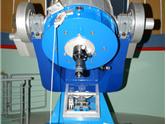
2006-03-01 16:00 ~ 17:00
- Speaker : Dr. Chih-Yueh Wang (Chung-Yuan Christian University)
We used two-dimensional hydrodynamical simulations and one-dimensional radiative transport radiation hydrodynamical simulations to investigate the properties of dense ejecta clumps (bullets) in Type Ia and core collapse supernova remnants, motivated by the observation of protrusions probably caused by clumps in Tycho…s remnant (SN 1572) and the Vela supernova remnant. The ejecta were assumed to freely expand into an ambient medium with a constant density. Ejecta clumps with an initial density contrast 100 relative to their surroundings are found to be rapidly fragmented and decelerated. In order to cause a pronounced protrusion on the blast wave front of the remnant as observed in the Vela remnant, a density contrast of ~1000 may be required. This result applies to moderately large clumps; smaller clumps would require an even larger density contrast. Clumps can create ring structure in the shell of the Vela remnant and we investigate the possibility that RX J0852--4622, an apparent supernova remnant superposed on Vela, is actually part of the Vela shell. The heating from the radioactive decay of Ni56 -> Co56 -> Fe56 in supernova ejecta during the first ~10 days is a possible mechanism to produce the clumping, which induces a forward shock that compresses the ejecta gas into a shell. When the flow tends toward a freely-expanding state, the thickness of the shell takes up ~ 100 in a narrow region limited by numerical resolution. The resultant interaction of the clumps with the remnant is expected at a stage as indicated by our simulations.
24
2006-02
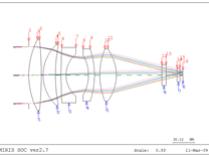
2006-02-24 16:00 ~ 17:00
- Speaker : Dr. Takahashi Kazue (APL, Johns Hopkins Univ.)
The frequencies of the harmonics of standing Alfven waves depend on the distribution of mass along the magnetic field line that sustains the waves. This fact is the basis of the inversion techniques (normal mode magnetospheric seismology) to estimate the plasma mass density variation along the magnetic field from the frequencies of observed ULF waves. However, the technique has not been used extensively because it is difficult to accurately determine the frequencies. Wave observations from geostationary (e.g., GOES) or near-geostationary (e.g., CRRES) satellites provide the best chance of a successful implementation of the technique because the satellites accumulate the spectral information on the harmonics with minimal variations in frequency. By using the frequencies observed by these satellites in a numerical density modeling technique, we find an equatorial mass density enhancement and much milder density variations along the field line than previously thought
14
2006-02
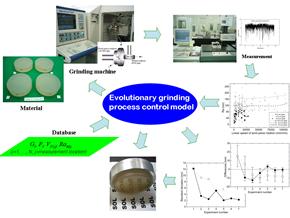
2006-02-14 14:00 ~ 15:00
- Speaker : Dr. Michitoshi Yoshida (Director of OAO, NAOJ)
I talk about the newly developed near-infrared (0.9-2.5um) imager and spectrograph ISLE for the Cassegrain focus (f/18) of the 1.88 m telescope at Okayama Astrophysical Observatory (OAO). The detector of ISLE is a HAWAII 1024 x 1024 HgCdTe array. The field of view and the pixel scale are 4.2 x 4.2 arcmin^2 and 0.25 arcsec / pixel, respectively. The pixel scale is optimized to sample the light profile of a point source under typical near-infrared seeing condition of OAO (around 1 arcsec). The spectroscopy mode of ISLE provides a capability of long-slit spectroscopy with a spectral resolution R ranging from 500 to 4800. We developed a low-noise readout electronics for the detector and achieved a readout noise lower than 10 e with single sampling readout. Applying a special readout technique, we also succeeded to suppress so-called \"reset anomaly\" of the detector significantly.
26
2006-01
2006-01-26 16:00 ~ 17:00
- Speaker : Dr. A-ran Lyo (여아란 박사, ASIAA
Nearby young clusters have distinct advantages for the study of star formation and stellar evolution issues. These issues include the origin of the initial mass function (IMF), binarity, the evolution of proto-planetary disks and the fundamental properties of pre-main sequence (PMS) stars. Such clusters provide for study a population of stars across a wide range of stellar masses at essentially uniform age, distance and metallicity, that are sufficiently bright owing to their youth and proximity for a multitude of precise astrophysical studies that would be difficult for older and/or more-distant cluster populations. In addition, young clusters usefully contribute to the study of cluster formation because their current physical state might a consequence of earlier, and possibly on-going, dynamical or evaporative processes. Our laboratory to study these issues is the Eta Chamaeleontis cluster which was discovered by Mamajek et al.(1999) with a deep ROSAT High-Resolution Imager observation.
20
2006-01
2006-01-20 15:00 ~ 16:00
- Speaker : Dr. Sergei Fabrika, Head of Stellar Physics group at SAO (Special Astrophysicl Observatory) of Russi
We review properties of ultraluminous X-ray sources (ULXs) isolated recently in external galaxies. We suggest that ULXs are supercritical accretion disks like that in SS433, but observed close to the disk axes. The SS433 funnel parameters where the relativistic jets formed are estimated. Emergent X-ray spectrum in the proposed model of the multicolor funnel (MCF) is calculated. Another critical idea comes from observations of nebulae around the ULXs. We present results of 3D-spectroscopy of nebulae of several ULXs with the 6-m Russian telescope. We found that the nebulae to be powered by their central black holes.
12
2006-01
2006-01-12 14:00 ~ 15:00
- Speaker : Prof. Ian Bond (Massey Univ., New Zealand)
Microlensing is a relatively new technique for searching for extrasolar planets. One of its main strengths is its ability to detect planets with masses as low as that of Earth. The MOA (Microlensing Observations in Astrophysics) project is a joint New Zealand-Japan collaboration that has been in operation since 1995. I will describe the microlensing technique together with some its special challenges. I will also describe the work of MOA since 1995 and describe the propects for the future with the new MOA 1.8m telescope.
